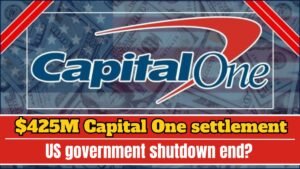Rising inflation across the United States has put enormous pressure on everyday households. The costs of basic necessities—such as groceries, gas, healthcare, rent, and utilities—have all surged dramatically over the past year. Families who were already living paycheck to paycheck are now finding it increasingly difficult to make ends meet. Amid this financial strain, the announcement of the $1,390 direct deposit relief by the Internal Revenue Service (IRS) has arrived as a major source of hope for millions of Americans.
This new initiative is designed to help citizens cover essential living costs, pay off debts, and stabilize their finances as the year draws to a close. The best part is that the $1,390 direct deposit relief will be sent directly into recipients’ bank accounts—ensuring fast, secure, and convenient access to funds without the need for paper checks or lengthy waiting periods.
What is this $1,390 Direct Deposit Relief Payment?
- This relief program is a large initiative of the federal government to mitigate the effect of rising inflation on low-income and moderate-income Americans.
- It is somewhat different from the COVID-19 pandemic stimulus checks. Those payments went to all Americans, while this assistance is more specifically targeted to those affected by inflation.
- The IRS is carrying out this action through its existing taxpayer database and digital payment system to ensure the funds reach eligible individuals securely and swiftly.
- This is not just one-time assistance; it is a continuum in the government’s efforts to assist citizens during times of economic duress. The precise amount of payment may vary slightly depending upon the individual’s income, tax status, and credits or deductions claimed on their 2024 tax return.
Why is this relief plan necessary?
Every American family’s hand at this time is struggling to eat due to the hiked prices. Rent rates have touched the sky; medical bills just keep rising; grocery costs have doubled as compared to the prices before.
In this, this $1,390 relief payment can really mean a difference for families. It provides them with an opportunity at least to breathe againhelp them get by when paying overdue bills, pay off debts, and just take care of some expenditure in the holiday season.
According to economists, such relief schemes not only help families but also incentivize the economy of the country. When one has to spend money, he will shop in local stores, hence giving rise to jobs and a strong economic cycle.
Who is eligible for this relief payment?
The IRS has issued clear criteria to ensure that this relief payment reaches the right people of the eligibility is given in the table below:
Eligibility Criteria for the $1,390 Direct Deposit Relief Payment
The table below outlines the eligibility requirements and estimated payment amounts for different categories of taxpayers under the IRS relief program.
| Category | Eligibility Requirements | Estimated Amount |
|---|---|---|
| Single Filers | Annual income below $75,000 | $1,390 |
| Joint Filers | Combined income below $150,000 | $2,780 |
| Dependents | Partial credit depending on status | Varies |
| Social Security Beneficiaries | Automatic payment via direct deposit | $1,390 |
Note: Eligibility and payment amounts may vary depending on updated IRS guidelines and 2024 tax return data.
If you have filed your 2024 tax return on time and your income is within the limits mentioned above, you don’t need to do anything extra. The IRS will automatically send this payment to your existing bank account.
In addition, Social Security, SSI (Supplemental Security Income), and SSDI (Social Security Disability Insurance) recipients will also have this payment automatically deposited into their accounts.
Payment Dates – When will the money arrive in the account?
The IRS has confirmed that the first phase will begin in November 2025. Those whose bank details are already in the IRS system will receive the payment first via direct deposit.
Typically, this amount appears in the account 3 to 5 business days after the transfer. However, those who have opted for a paper check may have to wait a little longer due to the postal process.
The IRS will also update its “Get My Payment” portal on its website, where citizens can track their payment status. The agency aims to ensure all eligible Americans receive their payments by mid-November 2025—providing them with financial relief before Thanksgiving and the holiday season.
How to Check Your Payment Status?
- To check your payment status, citizens can visit the official IRS website and use the “Where’s My Refund” or “Get My Payment” tool. You will need to enter your Social Security Number (SSSN), tax filing status, and some basic details.
- If you have recently changed your bank account or personal information, update it immediately to avoid any delays in payment.
- Keep in mind that different banks have different processing timelines, so even after the IRS sends the funds, it may take a few days for the payment to appear in your account.
Common Problems and Solutions
- Payment Delays: If your 2024 tax return has not yet been processed, there may be a delay in payment. To resolve this, complete your tax filing promptly.
- Incorrect Bank Details: Incorrect or outdated bank information can cause payment issues. In such a situation, immediately update your information on the IRS portal.
- Scams and Fraud: Scammers become active after the announcement of every government scheme. Remember, the IRS will never ask for your bank or personal information via call, email, or SMS If you receive such a message, ignore it and report it immediately.
How is this relief plan different from previous stimulus checks?
The COVID-19 stimulus checks were given to all taxpayers to help the economy during the pandemic. However, this $1,390 Direct Deposit Relief is completely targeted.
Its purpose is to provide assistance only to those who have been most affected by inflation. Also, this payment will be sent directly to accounts through the tax and social security system significantly reducing the possibility of fraud and making the process faster.
This is a smarter and more accountable relief plan one that not only provides immediate relief but also paves the way for long-term economic stability.
The Impact of This Payment on the Economy
When millions of Americans receive funds simultaneously, it has a ripple effect on the entire national economy.
- Consumer Spending Increases: People spend more, benefiting local businesses.
- Job Opportunities Grow: Increased demand leads companies to hire more employees.
- Debt Reduction: Families can pay off credit cards or loans, strengthening their financial stability.
- Communities Strengthen: When money circulates locally, both small businesses and communities are empowered.
What Will Happen to IRS Relief Programs in the Future?
Many experts believe that future relief programs will depend on the economic situation, employment rates, and inflation levels. If this program proves successful, it’s possible the government will continue similar targeted relief programs in 2026 or beyond.
Conclusion
This $1,390 Direct Deposit Relief Payment isn’t merely monetary assistance during these economically challenging times; it’s a kind gesture toward citizens from the government This is a ray of development for struggling families to make ends meet with the rising costs. Whether for rent, medical bills, or food needs, this money will soothe the lives of every American This gives hope to the masses that the government is there for the greater good in hard times and gets them on the right track in the matter of planning.
FAQs
Q1. Who is eligible for the $1,390 IRS relief payment?
A. Individuals earning below $75,000 and joint filers earning below $150,000 will qualify for the payment automatically.
Q2. When will the $1,390 direct deposit payments be sent?
A. The IRS will begin issuing payments in November 2025, with most recipients receiving funds via direct deposit.
Q3. Do I need to apply to receive the $1,390 relief payment?
A. No. If you filed your 2024 tax return and meet the income requirements, the IRS will send the payment automatically.



